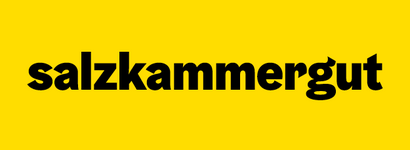Easter in the Salzkammergut
Easter is celebrated in the Salzkammergut with many traditional customs. Each region has its own traditions - from the consecration of the so called "palm bushes" to the "Ratschen", where a wooden shrapnel instruments' sound is supposed to replace the church bells from Maundy Thursday to Easter Sunday. For children of course, the highlight of the easter season is the Easter bunny hopping around and hiding little baskets filled with Easter eggs, chocolate bunnies and other little presents, often hidden in the garden.
Palm Sunday and the Holy Week
Palm Sunday is the sixth and last Sunday of Lent and the Sunday before Easter. Palm Sunday marks the beginning of Holy Week and thus the last part of the 40 days during Lent. Palm Sunday is celebrated in many places in the Salzkammergut with the consecration of the palms and palm processions. The palm branches are an essential symbol of Palm Sunday. They are tied according to an old tradition. A hazelnut stick is used and decorated with a bush of boxwood, palm catkins, aspen branches, holly, blessing tree and juniper - the seven evergreen branches. In the palm consecration in the Dachstein Salzkammergut region, the palm bunches, palm canes, also real palm fronds, oil branches, palm catkins or boxwood bushes are blessed with holy water. Afterwards they are carried along in the church procession and put behind the crucifix in the home. Palm Sunday is also celebrated in the Mondsee-Irrsee region with the consecration of the palms and the palm procession. One is called a palm mule if one is the last one in the family to appear for breakfast on Palm Sunday and is therefore possibly late for mass.
Palm Sunday is celebrated in many places in the Salzkammergut with the consecration of palms and palm processions. Palm branches are an essential symbol of Palm Sunday. They are tied according to old tradition. A hazelnut stick is used and decorated with a bush of boxwood, palm catkins, aspen branches, holly, blessing tree and juniper - the seven evergreen branches. In the palm consecration ceremony in the Dachstein Salzkammergut region, the palm bushes, palm sticks, also real palm fronds, olive branches, palm catkins or bushes of boxwood are blessed with holy water. They are then carried in the church procession and placed behind the crucifix in the home.
Palm Sunday is also celebrated in the Mondsee-Irrsee region with the consecration of palms and the palm procession. You are called a palm donkey if you are the last person in the family to arrive for breakfast on Palm Sunday and are therefore possibly late for mass.
Easter customs
From Maundy Thursday the bells are silent, they "fly to Rome'' in this period in the Fuschlsee region the children are on the road with the rattles. Until Easter night, the rattling of the ratchets takes over the function of the bells.
Good Friday is a religious day of mourning, commemorating the suffering and death of Jesus Christ on the cross. It is considered a "silent day" on which no music or dance events are to take place, and a strict day of fasting - nowadays many people refrain from eating meat on this day.
Also at the Wolfgangsee the Ratscherbuben have then their large appearances. With their rattles, they remind people of the times of prayer and church services and go from house to house. They are rewarded with sweets, eggs and money.
The Easter Basket
On Easter Sunday, a blessing of food takes place during the church services. Blessed food (meat, bread, eggs, etc.) is then eaten in the circle of the families. In the Fuschlsee region, too, the filled Easter baskets are brought to church on Easter Sunday for the consecration of food. Afterwards there is an Easter breakfast at home.
In the Mondsee-Irrsee region, godmother and godfather come for a visit with an Easter pretzel. Sometimes they also bring an Easter nest or a basket with gifts. But while toys or gifts of money have been forgotten, one thing has remained in memory: the Easter pretzel in the midst of the other gifts, which unmistakably symbolized that this visit of the godparents was something special.
Bread, once the staple food, continues to play a major role. The hand-shaped baked goods - so-called shaped breads - have their origins in the realm of myths and legends. As signs of meaning and symbols, they were once the focus of cultic activities and later replaced human and animal sacrifices as dough replicas. The customs surrounding bread go back to the deep-rooted idea that the life-sustaining power attributed to the grain is transferred to the eater, and that what is symbolically represented is also transferred at the same time. In Christianity, too, Easter bread and pastries stand for strength and a shared meal.
In Mondseeland, the tradition of the Easter pretzel is still lived and passed on today, confirms master baker Frank Berger from the bakery of the same name in Mondsee.
According to legend, the Easter Bunny paints the Easter eggs and hides them for the children in the garden. He is the typical animal that symbolizes Easter, the religious Easter lamb, on the other hand, is hardly significant anymore. In fact, it represents Jesus, who took upon himself the sins of mankind. On Easter Sunday morning, all children look for their Easter nests, which are usually filled with decorated Easter eggs, chocolate Easter bunnies and lots of sweets.
Sources: brauchtumskalender.ooe-volkskultur.at
Living annual customs in Upper Austria, Ernst Burgstaller
TVB Mondsee-Irsee, TVB Wolfgangsee, TVB Fuschlsee, TVB Dachstein Salzkammergut



